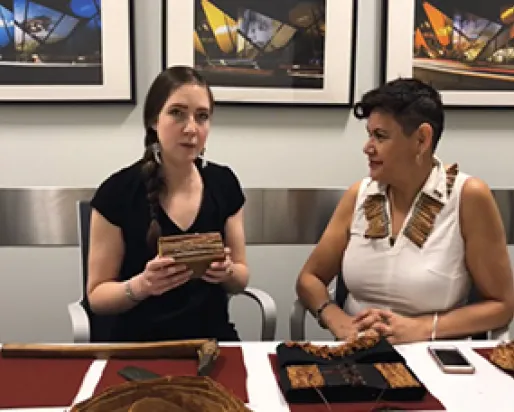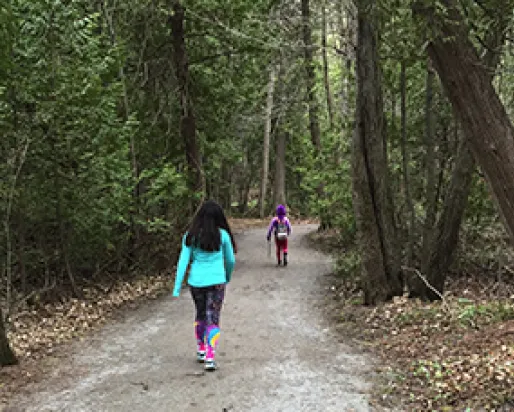ROM Around You: Ontario Forests
Category
Audience
Age
About
What do you know about the things around you? Let’s find out! Explore art, culture, and nature with ROM Teacher Julie Tomé.
Visit ROM Around You for other themes and curiosity challenges to discover more about the objects in your home, yard, and neighbourhood!
Fun Fact: Some trees in the boreal forest, like jack pines and black spruce, need fire to reproduce – the heat from the fire opens their cones so the seeds can get out!
Ontario has lots of trees! There are four forest regions in our province: the Hudson Bay Lowlands in the Far North, the boreal forest in Northern Ontario, the Great Lakes-St. Lawrence forest, and the deciduous forest of Southern Ontario. Each of these regions is home to a variety of trees, other plants, animals, and fungi that rely on each other and on us to survive.
Curiosity Challenge: Explore the trees around your neighbourhood. Go for a nature walk and look for relationships between trees and other plants, animals, and fungi.
Materials
- Appropriate clothing for the weather
- A pair of walking shoes
- Notepad and pencil
- Smartphone with a camera and the Seek app by iNaturalist (optional)
- Field guide (optional)
Instructions
- Dress for the weather. Put on a good pair of shoes and head to your local recreational trail! If you don’t have trails within walking distance from your home, take a walk through your neighbourhood instead.
- Be safe! Remember physical distancing if you run into neighbours, and don’t go into areas that are closed due to COVID-19.
- Pay special attention to your surroundings. Use your camera or notebook and pencil to document what you observe. Use your senses – what can you see, hear, and smell? (Touching and tasting are not recommended.)
- Found something you don’t recognize? Use your field guide or an app like Seek by iNaturalist to identify it.
- Questions to ponder:
- Keep an eye out for relationships between organisms – do you see any fungi on tree stumps? Moss on trees? What other relationships do you observe?
- How many types of trees do you see?
- What type of forest do you think you are in?
- What animals are found in the forest you are in? What roles do they play in the forest ecosystem (producers, consumers, or decomposers)? Why are they an important part of the ecosystem?
- Do you see any signs of human activity here? Is the impact of that activity positive or negative?
- Do a tick check when you get home if you were in a wooded area or in tall grass.
- Share your observations and thoughts with us on social media @ROMtoronto and #ROMathome




